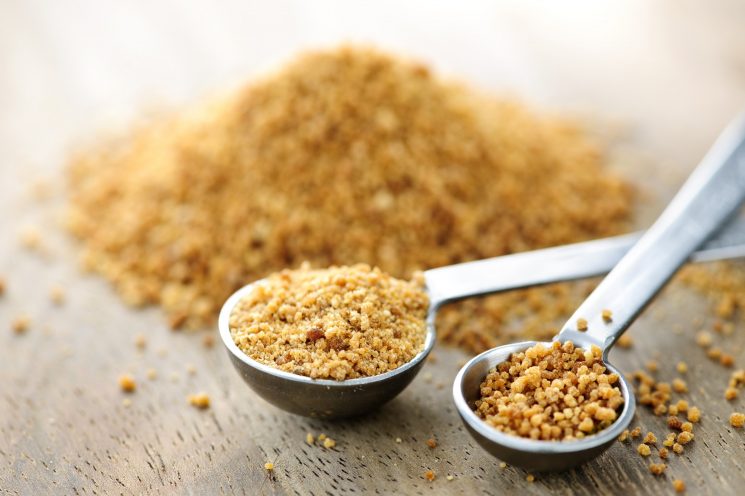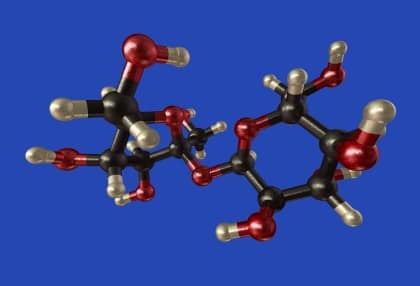How Sweet It Is: Different Types of Sugar

What exactly is sugar?
All green plants manufacture sugar through photosynthesis, which is how plants use sunlight to make energy. This energy is in the form of sugar and more specifically sucrose. Sucrose is found in fruits and vegetables. Once photosynthesis creates sugar (or sucrose), plants have the unique ability to change this sugar into starch and various other sugars for storage. This process is what gives us such a variety of fruits and vegetables, from a sweet pear to starchy corn on the cob.
Sugar cane and sugar beet plants contain sucrose in large quantities, and that’s why they are used as commercial sources of sugar. A stalk of the cane plant contains about 14% sugar. Sugar beets contain about 16% sugar. There is no difference in sugar produced from either cane or beet. The chemical makeup of sugar from a sugar beet and from sugar cane is identical. Cane sugar and beet sugar taste, smell and behave exactly the same.
The processing of sugar cane and sugar beet plants is what gives us different types of sugars (with the exception of honey and high fructose corn syrup) When it comes to sugar, the term refining means ‘to make pure’.
Different Types of Sugar
Raw Sugar: The intermediate product during the processing or refining. It is a tan, coarse granulated product obtained from the evaporation of clarified sugar cane juice. It is difficult to buy 100 percent raw sugar because of its impurities.
Brown Sugar: Essentially sugar crystals coated in molasses. Created my mixing molasses with white sugar crystals, or boiling a molasses syrup until brown sugar crystals form.
Molasses: The syrup remaining from processing cane or beets. Light molasses has the sweetest flavor and is generally used in baked goods whereas dark molasses has a less sweet flavor and is used in more savory dishes (baked beans)
Turbinado sugar: Raw sugar that has been refined to a light tan color by washing to remove surface molasses and impurities. In total sucrose content, turbinado is closer to refined sugar than to raw sugar. Nutritionally speaking, its calorie and carbohydrate content are the same as table sugar.
Honey: A mixture of sugars formed from nectar that bees make. Honey varies in composition and flavor, depending on the source of the nectar. Honey contains much more fructose and much less sucrose than other sugars. Honey is sweeter than table sugar.
High Fructose Corn Syrup: This is made by treating corn to produce corn syrup. The corn syrup is then treated to produce High Fructose Corn Syrup by converting much or all of the glucose to fructose. The resulting product is sweeter than sucrose. The composition is then a high amount of fructose and some dextrose. Estimated to be about 1 1/2 times sweeter than table sugar.

Which sugar is best to use?
A little chemistry before answering this question. All carbohydrates are made up of one or more molecules of sugars. The family of sugars includes:
Monosaccharides (one-molecule sugars)
• glucose (dextrose or blood sugar)
• fructose (levulose or fruit sugar)
• galactose (occurs only in milk)
Disaccharides are two monosaccharides linked together:
• sucrose (table sugar) = glucose + fructose
• lactose (milk sugar) = glucose + galactose
• maltose (malt sugar) = glucose + glucose
All sugars breakdown to monosaccharides (single sugars) during digestion. Your body doesn’t distinguish what foods or sugar sources they came from. Single sugars such as fructose in fruit and honey, can be absorbed exactly as they are, they don’t breakdown anymore. Other sugars (sucrose in table sugar, brown sugar, etc) lactose (milk sugar) have to be broken down to their single sugar components for your body to absorb them. So your body breaks down all sugars into the same 3 things: fructose, glucose and galactose.
While all sugars contribute four calories per gram, some foods contain more concentrated sources of calories than others. For example, a teaspoon of table sugar contains 16 calories. Honey is a more dense calorie source – a teaspoon contains 22 calories. But a teaspoon of orange juice or applesauce has just four calories, and also contains vitamins, minerals, and fiber.
Because added sugar gives us calories without nutrients, it is best to enjoy foods that are naturally sweet, without added sugar. And when you do add sugar, use whichever kind you prefer in moderation.

Natalie Monson
I'm a registered dietitian, mom of 4, avid lover of food and strong promoter of healthy habits. Here you will find lots of delicious recipes full of fruits and veggies, tips for getting your kids to eat better and become intuitive eaters and lots of resources for feeding your family.
Learn More about Natalie
Thank you! I love the science lesson. I love learning about our bodies and foods and how our bodies react to what we eat. I don’t remember much of these things from school and I wish I did. Now that I’m homeschooling I get to learn it all again and as crazy as it may sound, I LOVE that!
Very informative – thank you!
Thank you so much for this article. I have been wondering about this a lot lately and this truly helps in knowing that sugar is sugar.
Thank you for including honey in this! I have a daughter that has a condition called short gut, meaning she’s lost a lost of intestine. As a result, she cannot have any kind of sugar until she’s older as it speeds things up a little too much. As I’ve been looking for sugar free recipes to try and modify my cooking, everyone is touting honey (or molasses) as sugar free. It drives me bonkers! I’ve had so many conversations with people that it’s the chemical make-up (anything ending in -ose, -ase, -ese) she has to avoid, NOT just sugar. Awesome! Would love to see more of these kinds of posts!
I would love to see you add some of the “newer” sweetners we are seeing now like brown rice syrup and agave nectar for example. Do you have something like this comparing oils?